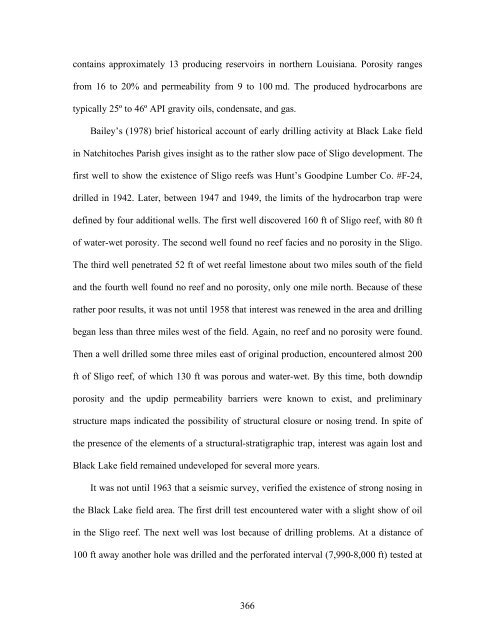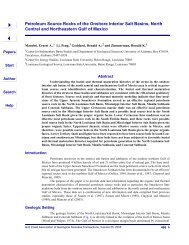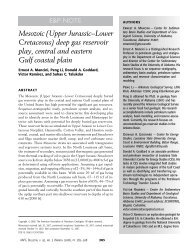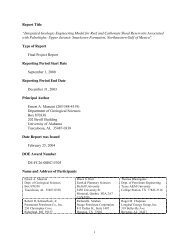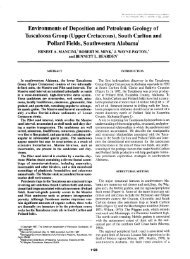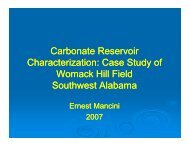Part 4 - Berg - Hughes Center
Part 4 - Berg - Hughes Center
Part 4 - Berg - Hughes Center
You also want an ePaper? Increase the reach of your titles
YUMPU automatically turns print PDFs into web optimized ePapers that Google loves.
contains approximately 13 producing reservoirs in northern Louisiana. Porosity ranges<br />
from 16 to 20% and permeability from 9 to 100 md. The produced hydrocarbons are<br />
typically 25º to 46º API gravity oils, condensate, and gas.<br />
Bailey’s (1978) brief historical account of early drilling activity at Black Lake field<br />
in Natchitoches Parish gives insight as to the rather slow pace of Sligo development. The<br />
first well to show the existence of Sligo reefs was Hunt’s Goodpine Lumber Co. #F-24,<br />
drilled in 1942. Later, between 1947 and 1949, the limits of the hydrocarbon trap were<br />
defined by four additional wells. The first well discovered 160 ft of Sligo reef, with 80 ft<br />
of water-wet porosity. The second well found no reef facies and no porosity in the Sligo.<br />
The third well penetrated 52 ft of wet reefal limestone about two miles south of the field<br />
and the fourth well found no reef and no porosity, only one mile north. Because of these<br />
rather poor results, it was not until 1958 that interest was renewed in the area and drilling<br />
began less than three miles west of the field. Again, no reef and no porosity were found.<br />
Then a well drilled some three miles east of original production, encountered almost 200<br />
ft of Sligo reef, of which 130 ft was porous and water-wet. By this time, both downdip<br />
porosity and the updip permeability barriers were known to exist, and preliminary<br />
structure maps indicated the possibility of structural closure or nosing trend. In spite of<br />
the presence of the elements of a structural-stratigraphic trap, interest was again lost and<br />
Black Lake field remained undeveloped for several more years.<br />
It was not until 1963 that a seismic survey, verified the existence of strong nosing in<br />
the Black Lake field area. The first drill test encountered water with a slight show of oil<br />
in the Sligo reef. The next well was lost because of drilling problems. At a distance of<br />
100 ft away another hole was drilled and the perforated interval (7,990-8,000 ft) tested at<br />
366


